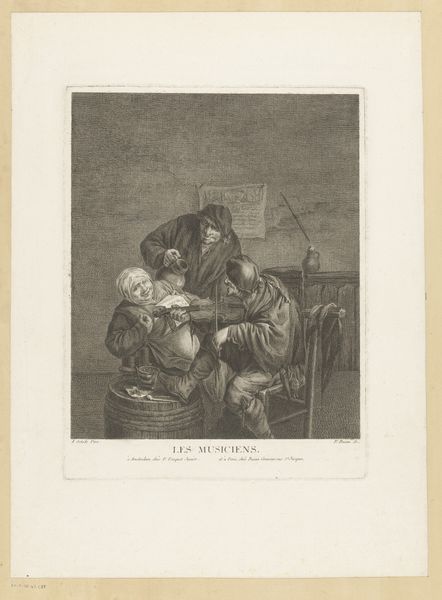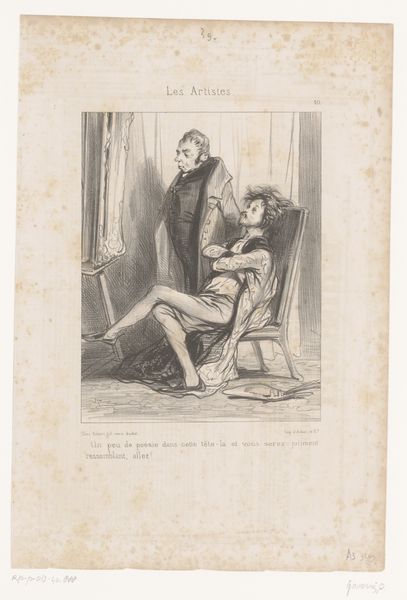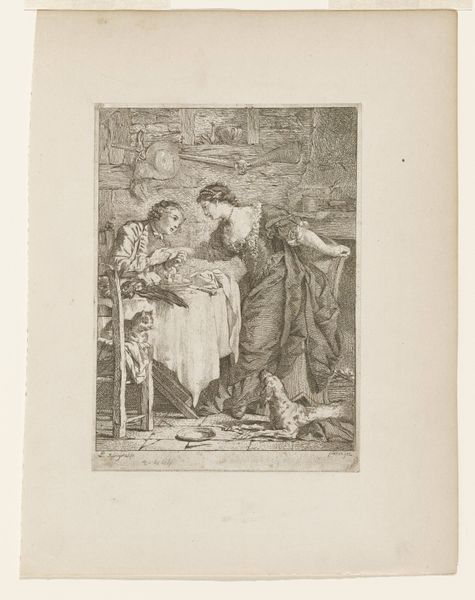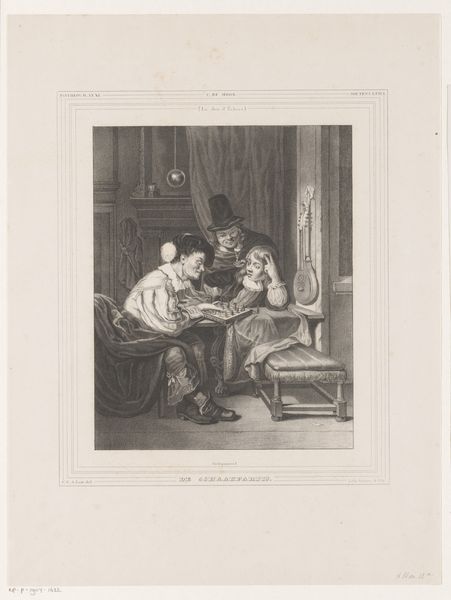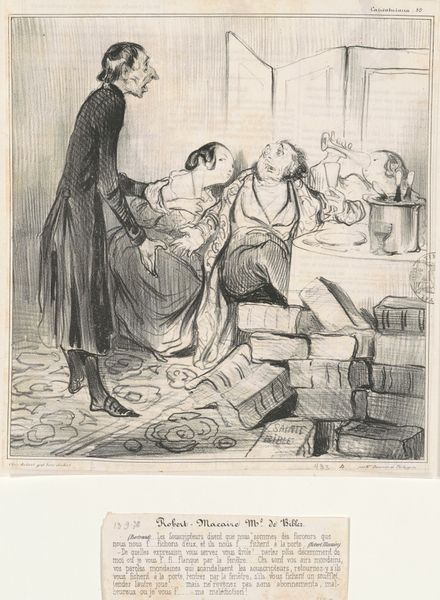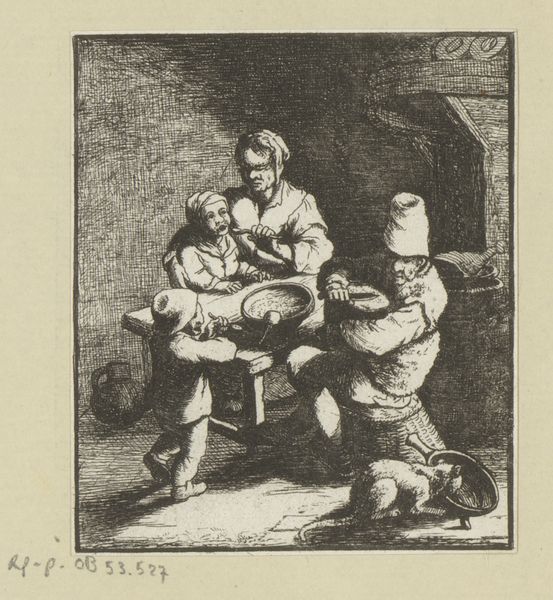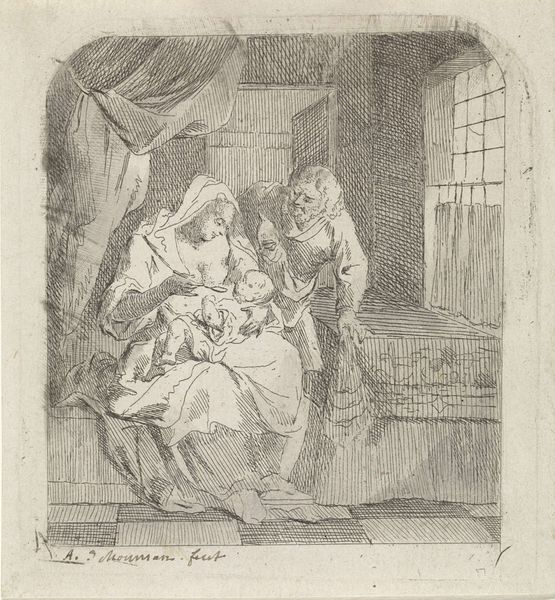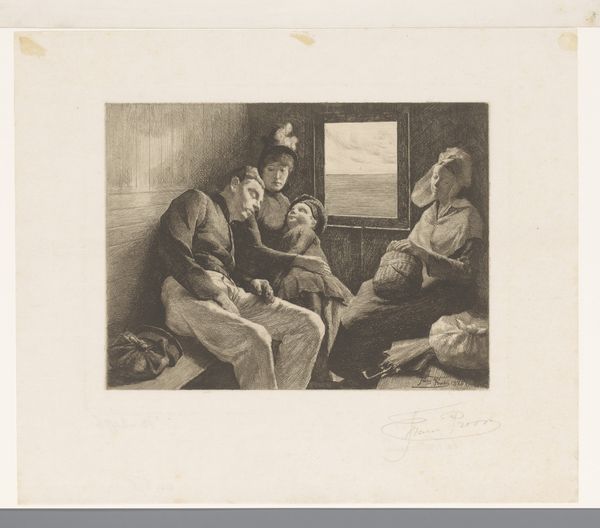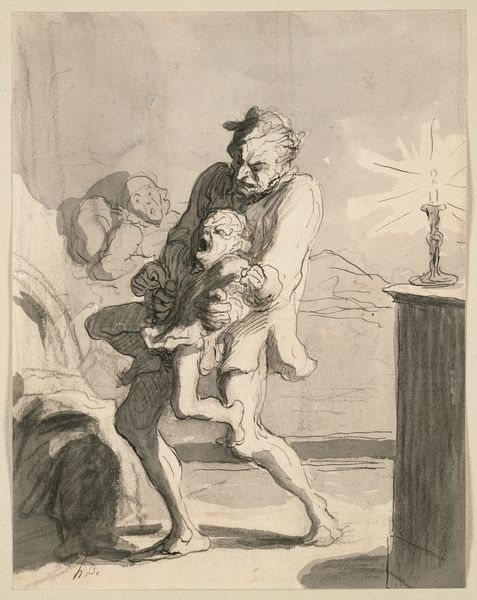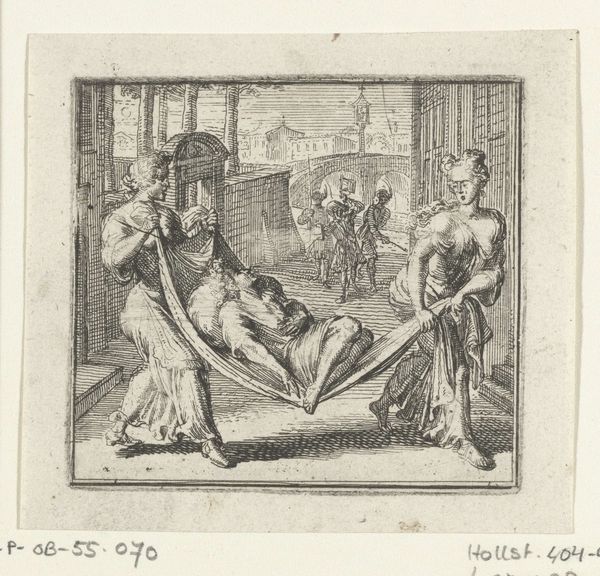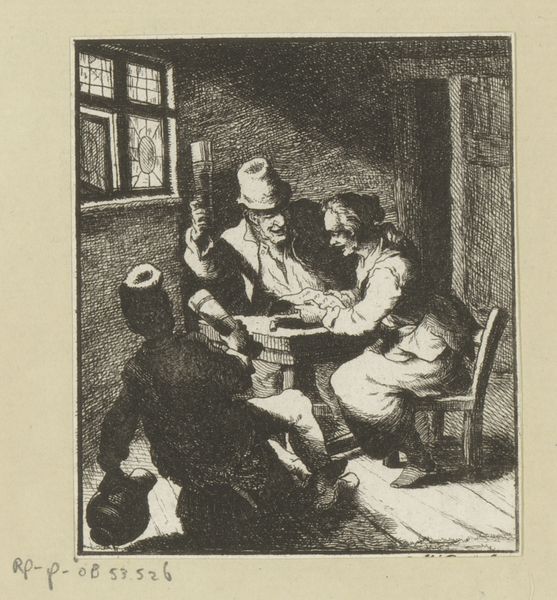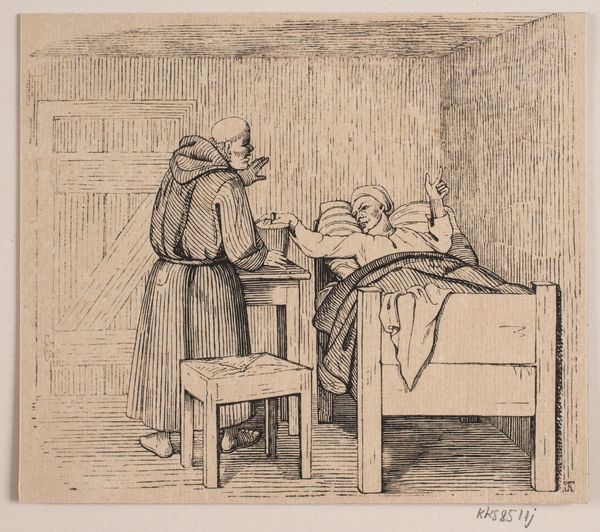
Twee boeren en een boerin drinkend en viool spelend 1822 - 1883
0:00
0:00
Dimensions: height 113 mm, width 133 mm
Copyright: Rijks Museum: Open Domain
Curator: This engraving, titled "Twee boeren en een boerin drinkend en viool spelend," or "Two Peasants and a Peasant Woman Drinking and Playing the Violin," comes to us from Rombertus Julianus van Arum, created sometime between 1822 and 1883. Editor: My immediate reaction is to the sheer physicality of the scene. The textures conveyed through the engraving technique suggest a rough, homespun world—thick woolen clothes, coarse faces, the worn wood of the furniture. It's a palpable environment. Curator: Indeed, the use of engraving allows for a remarkable control of line, creating a dynamic interplay of light and shadow. Note how the artist uses the density of lines to define form, particularly in the drapery and faces. It speaks to a baroque influence in its attention to detail and drama, doesn't it? Editor: But I'm drawn more to the implied labor here. The materials of their clothing, the probable source of the alcohol, even the creation of the print itself involved a whole chain of human effort. One imagines the engraver's hands, meticulously cutting into the metal plate, mimicking and transforming labor into art. Curator: I see that. Yet, the formal arrangement cannot be ignored. The composition is carefully balanced, with the figures clustered around the central table. The diagonal line created by the violin leads our eye through the scene, creating a visual rhythm that's quite pleasing. The narrative is secondary to the form, almost. Editor: I wouldn't say the narrative is secondary. To consider the process behind this print allows a deep understanding of how folk art, like that which depicts this everyday tavern scene, connects us to the culture of its making. The details depicted help the audience connect the material with how life was actually lived. Curator: Perhaps a synthesis then? The image does function as an artifact of visual pleasure, regardless of any associated manual creation or socioeconomic consideration. The density of interwoven lines, the considered grouping of forms and characters: all contribute to a fascinating compositional reading. Editor: Exactly. It is the convergence of materiality and its conscious crafting, a moment suspended between raw existence and an artistic representation of cultural significance that grants it a lasting hold on us. The work becomes about, and beyond, its making.
Comments
No comments
Be the first to comment and join the conversation on the ultimate creative platform.
